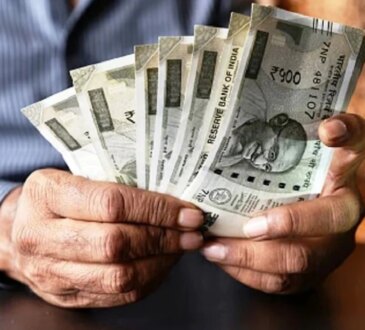EMERGING MARKETS-Asian currencies gain as dollar retreats; equities rise on Fed easing bets

* Malaysia ringgit, Indonesia rupiah lead gains, dollar retreats * Fed rate cut bets surge after dismal U.S. jobs report * Trump tariffs hit major Asian economies with 15% to 25% rates on exports (Updates for afternoon trade) By Roushni Nair Aug 4 (Reuters) – Asian currencies gained on Monday as dollar weakness offered relief from recent losses, while equities climbed on hopes the U.S. Federal Reserve would cut rates, easing economic pressures amid uncertainty over the new U.S. tariff regime. The Malaysian ringgit led the advance, strengthening 1% to 4.233 per dollar and snapping six straight sessions of losses. The Indonesian rupiah and Taiwan dollar surged as much as 0.7%, and the Philippine peso added 0.57%. The South Korean won and Singapore’s dollar edged 0.2% higher. The dollar index recovered marginally on Monday after tumbling more than 1% on Friday when President Donald Trump unveiled sweeping tariffs and after a dismal U.S. jobs report sent traders scrambling to price in aggressive Fed rate cuts. “Investors have shifted focus from trade uncertainties to the impact of the tariffs that have been in place for a while,” Maybank analysts said in a note. “For now, the greenback may be caught in a tug of war between growth and inflation concerns that could leave it range-bound, but we look for the eventual slowdown in the U.S. economy and resumption of Fed easing cycle to take the USD lower.” Regional equity markets largely edged higher as the heightened prospect of lower borrowing costs helped soothe concerns about the U.S. economy. Seoul and Singapore gained as much as 1% each, and equities in Mumbai, Bangkok, and Manila rose between 0.4% and 0.8%. Jakarta and Kuala Lumpur bucked the trend, slipping more than 0.3% each. This week’s ISM services data and jobless claims will be crucial in determining whether the Fed would move more aggressively to support the economy. Trump’s tariff offensive hit Asian countries with rates ranging between 15% and 40%. India faces the steepest levies of major Asian economies at 25%, while South Korea negotiated down to 15% after intensive talks. Several regional players, including Vietnam, Indonesia, the Philippines, Japan and Cambodia, secured agreements after weeks of negotiations, leaving markets to reassess which economies face the greatest export disruption. “We think this is a better outcome than what was anticipated earlier, but still the rate of tariff is much higher than the status quo,” said Rahul Bajoria, ASEAN and India economist at BofA Securities. Central bank policy remains in focus across the region. The Monetary Authority of Singapore and Bank of Japan maintained current rates alongside the Fed last week. India’s central bank meets on Wednesday, while Thailand’s rate decision is due next week. HIGHLIGHTS: ** Indonesia’s economic growth likely slowed again in Q2 ** Outlook for top palm oil exporters worsens Asian stocks and currenc ies as of 0700 GMT COUNTRY FX RIC FX FX INDE STOCK STOCK DAILY YTD X S S YTD % % DAILY % % Japan -0.19 +6.4 <.N2 -1.25 2.50 6 25> China 0 EC> India +0.00 -2.2 <.NS 0.46 4.37 0 EI> Indones +0.59 -1.8 <.JK -0.36 6.09 ia 2 SE> Malaysi +0.99 +5.5 <.KL -0.44 -7.05 a 5 SE> Philipp +0.50 +1.1 <.PS 0.67 -2.76 ines 4 I> S.Korea 0 11> Singapo +0.11 +6.0 <.ST 0.77 10.51 re 8 I> Taiwan +0.43 +9.6 <.TW -0.24 1.49 5 II> Thailan -0.02 +5.6 <.SE 0.47 -12.5 d 8 TI> 8 (Reporting by Roushni Nair in Bengaluru; Editing by Jamie Freed and Janane Venkatraman)




